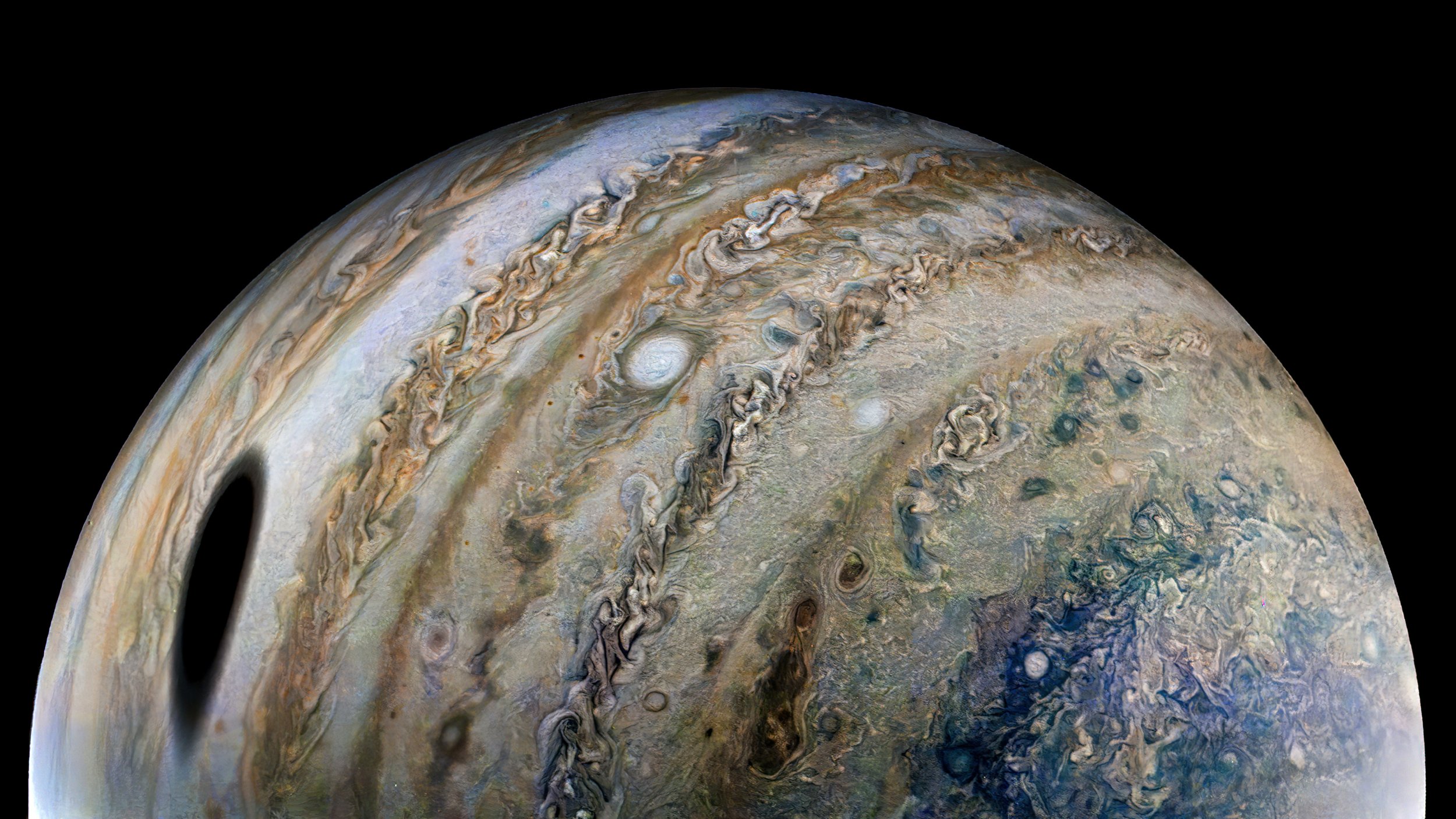A new study examining never-before-used gravitational data on Jupiter confirmed that the mass of heavy metals under the planet’s gassy exterior is far greater than ever suspected.
The researchers outline this lends credence to the idea that our solar system may have contained dozens of additional “planetesimals” or small planets, but that these were swallowed by Jupiter. The authors conclude that Jupiter’s formation was among the most impactful events in the history of the formation of the solar system.
The data were collected by the Juno spacecraft, which has also produced a catalogue of imagery of unparalleled beauty. The largest planet in the solar system ripples with colors and swirling textures more captivating than a Van Gogh painting, but they hide a remarkable detail, that the rocky interior is punctuated by huge variations in heavy metal concentrations.
Just how much metal are we talking about? Juno’s examinations reveal the total mass of heavy metals varies depending on modeling from between 11 and 30 Earth masses, representing potentially dozens of planets, or even hundreds of planetesimals.
Two models of the formation of Jupiter exist. The first is that a large rocky core formed out of early solar system material called “pebbles,” which grew, as this new study revealed, to be around 7 times the mass of the Earth. Afterwards, the gravitational pull was so large as to suck up mostly helium gas from vast distances.
This part is called the gas accretion phase, and as the Juno mission trailer explains, the forces in the atmosphere of the planet would have barred any more pebbles from being sucked in because of the repelling forces of the gas exterior envelope.
In contrast, the new study lends to the planetesimal accretion theory of Jupiter’s formation, because only a body as big as a planetesimal could be pulled into the atmosphere by Jupiter’s gravity, but not be repelled by its chaotic atmospheric forces, and only a planetesimal could have brought in so much metallic matter.
The fascinating “what if” now stands that, if those planetesimals were left to live on, they would have almost certainly formed larger rocky bodies like Mars, Mercury, and the Earth, potentially punctuating our cosmic cul-de-sac with many more neighbors.
“Metallicities inferred from remote atmospheric observations in exoplanets might not represent the bulk metallicity of the planet,” the authors conclude. In other words, the data offer up a valuable lesson to planetary astronomers looking at other gas giants in the future—that you can’t judge one by its cover, as the gasses can hide all kinds of surprises. WaL
PICTURED ABOVE: NASA’s Juno spacecraft captured this view of Jupiter during the mission’s 40th close pass by the giant planet on Feb. 25, 2022. The large, dark shadow on the left side of the image was cast by Jupiter’s moon Ganymede. PC: NASA/JPL-Caltech/SwRI/MSSS – Thomas Thomopoulos © CC BY.
If you think the stories you’ve just read were worth a few dollars, consider donating here to our modest $500-a-year administration costs.



